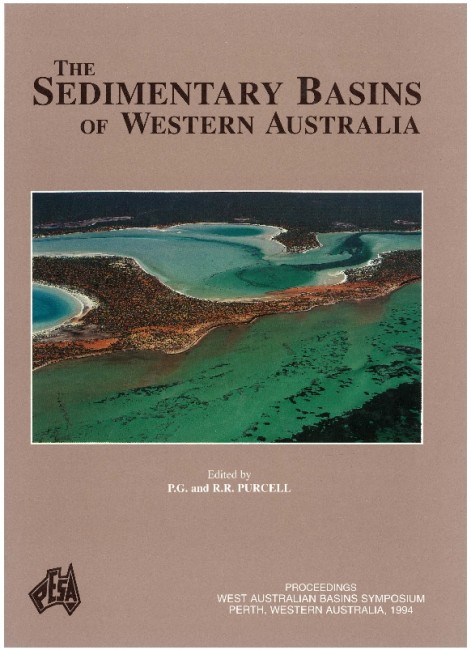Publication Name: The Sedimentary Basins of WA
Authors: E. Kopsen
Publication Volume: 1
Date Published: July 1994
Number of Pages: 24
Reference Type: Book Section
Abstract:
To date, exploration in the greater northern Carnarvon Basin has resulted in at least 80 wildcat discoveries, including four giant fields and seven major fields. With indicated total basin reserves of some 9.1 BBOE, this isAustralia's richest oil and gas province. Multiple mature source rocks in the Jurassic pre- and syn-rift sequences
and the Triassic section ensure adequate charge, predominantly of gas/condensate, in each sub-basin of the aborted-rift.
Reserves on the Rankin Fairway and Exmouth Plateau amount to some 7 BBOE (13 percent being liquids) as
against 1.1 BBOE (45 percent liquids) on the Central Fairway and 0.9 BBOE (69 percent liquids) on the Eastern Fairway. The aborted-rift area and adjacent platforms contain at least 71 discoveries, 53 of these having a pool sealed by shales at the 'regional seal' near the base of the post-rift sequence. About 79 percent of the BOE reserves in faulted anticlines/fault blocks at this level are trapped as oil/condensate, whereas simple 'base
Muderong' anticlines contain some 44 percent of their hydrocarbons as liquids. In contrast, Rankin Fairway
horsts contain about 19 percent of their hydrocarbons as liquids.
The median size of recent discoveries, sealed by the Muderong Shale, has increased; this is contrary to the discovery pattern in most sedimentary basins which have reached a similar stage of exploration maturity. As a
result, the prediction of expected ultimate reserves is somewhat uncertain for the northern Carnarvon Basin.
With several notable exceptions, exploration for traps sealed by pre-rift, syn-rift and 'shallow' post-rift shales
has generally been disappointing and there are currently insufficient discoveries to statistically analyse future
trends for these levels. With future discoveries and reserves growth in existing discoveries, it would not be
unreasonable for an additional! to 2 BBOE to be added to basin reserves before the year 2010.
'Reserves' referred to in this paper are the author's best estimates assembled from various sources for a general
comparison and historical analysis. References to reserves in any single field or discovery, most of which are still
undeveloped, should be regarded with caution. These estimates also relate to technically recoverable resources using current technology and standard industry parameters.


